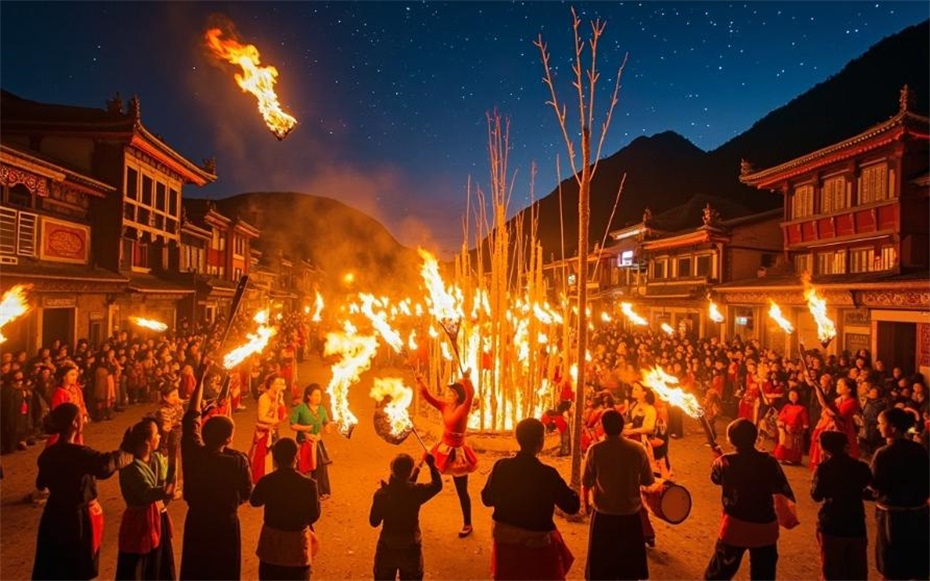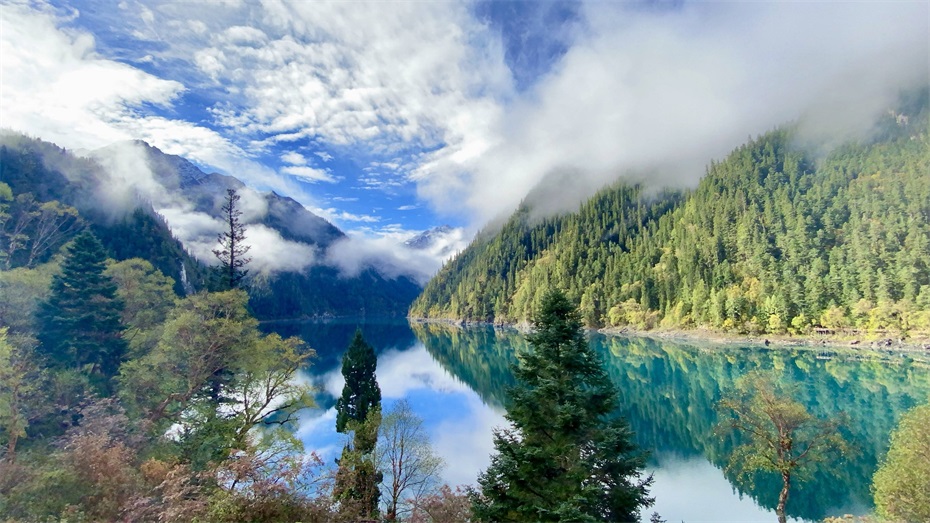Sichuan Province
Overview of Sichuan Province

Sichuan Province, abbreviated as "Chuan" or "Shu", is located in the southwestern hinterland of China, upstream of the Yangtze River, and is an important economic, cultural, and populous province in China. The total area of the province is 486000 square kilometers, ranking fifth in the country, with 21 cities (prefectures) under its jurisdiction and a permanent population of 83.74 million people (2022 data). In 2022, the total regional GDP of the province reached 5.67 trillion yuan, ranking sixth in the country and being the largest province in terms of economic output in western China.
Sichuan Province currently governs 18 prefecture level cities including Chengdu (provincial capital), Zigong, Panzhihua, Luzhou, Deyang, Mianyang, Guangyuan, Suining, Neijiang, Leshan, Nanchong, Meishan, Yibin, Guang'an, Dazhou, Ya'an, Bazhong, and Ziyang, as well as three autonomous prefectures including Aba Tibetan and Qiang Autonomous Prefecture, Garze Tibetan Autonomous Prefecture, and Liangshan Yi Autonomous Prefecture. As the 'Land of Abundance', Sichuan is renowned for its picturesque scenery, and is also an important national defense technology and industrial base as well as a modern agricultural base in China.
2°¢ Geographical features
1. Location characteristics
Sichuan Province is located between 26 °„ 03 °‰ -34 °„ 19 °‰ north latitude and 97 °„ 21 °‰ -108 °„ 12 °‰ east longitude, connecting Chongqing to the east, Yunnan and Guizhou to the south, Xizang to the west, and Qinghai, Gansu and Shaanxi to the north. Located in the upper reaches of the Yangtze River and the Yellow River, the province is an important link connecting southwest, northwest and central China, and an important node in the construction of the "the Belt and Road" and the development of the Yangtze River Economic Belt.
2. Terrain and landforms
The terrain of the whole province is high in the west and low in the east, with significant differences:
Western China: Western Sichuan Plateau (with an average elevation of over 4000 meters)
Central region: Sichuan Basin (with an area of approximately 260000 square kilometers)
East: Parallel Ridge Valley Area
Highest Peak: Gongga Mountain (7556 meters above sea level)
3. Water system distribution
Yangtze River system: Jinsha River, Minjiang River, Tuojiang River, Jialing River
Yellow River System: Ruoergai Wetland Water Conservation Area
Main tributaries such as Yalong River and Dadu River
Lakes: Lugu Lake, Qionghai Lake, etc
4. Climate characteristics
The climate types are complex and diverse:
Eastern Basin: Subtropical humid climate
Western Plateau: Plateau Mountain Climate
Annual average temperature: -1~19 °Ê
Annual precipitation: 500-1200 millimeters
3°¢ Historical context
1. Origin of Civilization
Paleolithic Age: Ziyang Man Site
Neolithic Age: Sanxingdui Culture (4800 years ago)
Pre Qin period: Ancient Shu Kingdom (Sanxingdui, Jinsha Site)
2. Organizational history
Qin Dynasty: Establishment of Shu Commandery
Han Dynasty: Yizhou Governor's Department
Tang Dynasty: Jiannan Road, Shannan West Road
Song Dynasty: Chuanxia Four Roads, named after 'Sichuan'
Qing Dynasty: The basic formation of Sichuan Province
3. Modern and Contemporary Development
During the War of Resistance Against Japan: an important base in the rear area
Third line construction period: important industrial layout
Reform and Opening Up: One of the Origins of Rural Reform
New Era: Construction of the Chengdu Chongqing Economic Circle
4°¢ Cultural Essence
1. Regional cultural characteristics
Shu Culture: The Mysterious and Romantic Sanxingdui Civilization
Three Kingdoms culture: Wuhou Temple, Jianmen Pass
Tibetan Qiang Yi Culture: Ethnic Minority Customs
Immigrant Culture: Integration of Hubei, Guangxi and Sichuan
2. Intangible Cultural Heritage

Folk art: Shu embroidery, Mianzhu New Year paintings
Traditional skills: Chengdu lacquerware, Luzhou Laojiao liquor brewing
Folk Culture: Torch Festival, Mountain Turning Festival
3. Dialect characteristics
Southwest Mandarin: Chengdu Chongqing area, Guanchi area
Tibetan: Tibetan inhabited areas
Yi language: Yi ethnic settlements
Qiang language: Qiang ethnic settlement area
5°¢ Tourist destinations
1. World Heritage Sites

Huanglong Scenic Area
the Habitat of Giant Pandas in Sichuan Province
Qingcheng Mountain - Dujiangyan Irrigation Project
Mount Emei - Leshan Giant Buddha Scenic Area
2. 5A level scenic spot
Qingcheng Mountain Dujiangyan Irrigation Project Tourist Attraction
Leshan Emei Mountain Scenic Area
Jiuzhaigou Valley Scenic and Historic Interest Area Tourist Attraction in Aba Prefecture
Mianyang Beichuan Qiangcheng Tourist Area
Guangyuan Jianmen Pass Tourist Area
3. Featured tourism
Giant Panda Ecotourism: Chengdu Giant Panda Base
Tibetan and Qiang Ethnic Experience: Mount Siguniang, Taoping Qiang Village
Red Study Tour: Deng Xiaoping's Hometown
Journey of Three Kingdoms Culture: Wuhou Temple, Langzhong Ancient City
6°¢ Food map
1. Sichuan cuisine features

Chongqing (formerly Sichuan): hot pot, boiled fish
Leshan: Bowl chicken, sweet skinned duck
Zigong: Cold Eating Rabbit, Fire Edge Beef
2. Featured snacks
Dandan noodles
Zhong dumplings
Chao Shou
Three cannons
Tossed Clear Noodles in Chili Sauce
3. Specialty drinks
Wuliangye
Luzhou Laojiao
Mengding Mountain Tea
Pixian watercress
7°¢ Development Status
1. Industrial system
Electronic information: Chengdu High tech West Zone
Equipment manufacturing: Deyang Heavy Equipment Base
Food and beverage: Sichuan wine, Sichuan tea, Sichuan cuisine
Energy and Chemical Industry: Leading in Shale Gas Development
2. Transportation network
Aviation: Chengdu Shuangliu and Tianfu International Airport
Railway: "Four Directions and Eight Corridors" High Speed Rail Network
Highway: The mileage of expressways exceeds 9000 kilometers
Water transportation: Yangtze River Golden Waterway
3. Open platform
China (Sichuan) Pilot Free Trade Zone
Tianfu New Area
Western Land Sea New Corridor
China Europe Railway Express (Chengdu)
From the summit of snow capped mountains to the fertile fields of basins, from the mystery of Sanxingdui to the homeland of pandas, this' Land of Abundance 'is writing a magnificent chapter of governing Shu and revitalizing Sichuan in the new era with the courage of' daring to be the first in the world 'and the open and inclusive mind. It has both the poetic flavor of "The window contains the snow of the western mountains" and the leisure of "The Three and Nine Heavenly Mansions, and you can go to Sichuan in comfort", and is becoming a model of Chinese path to modernization in the west.
simliy
